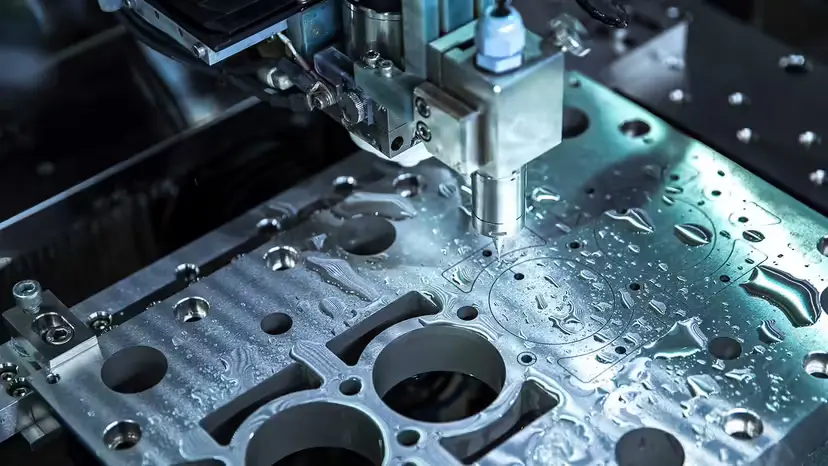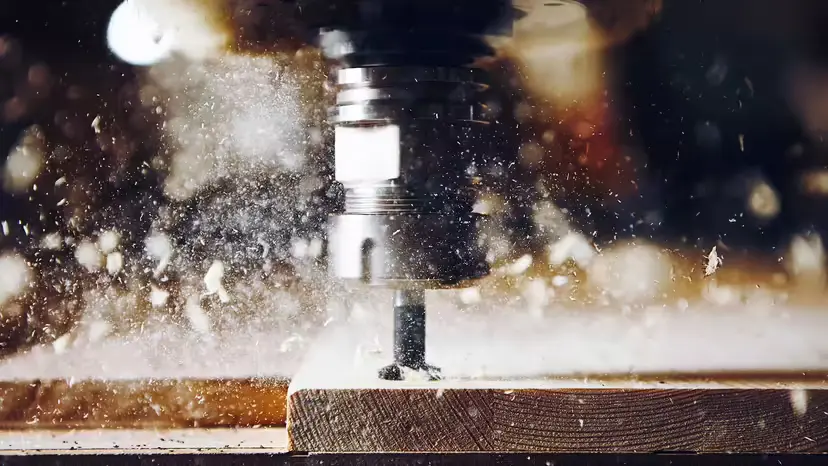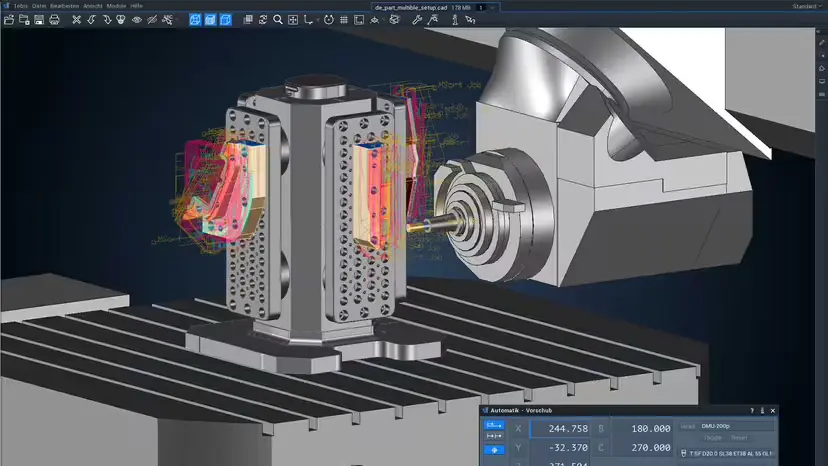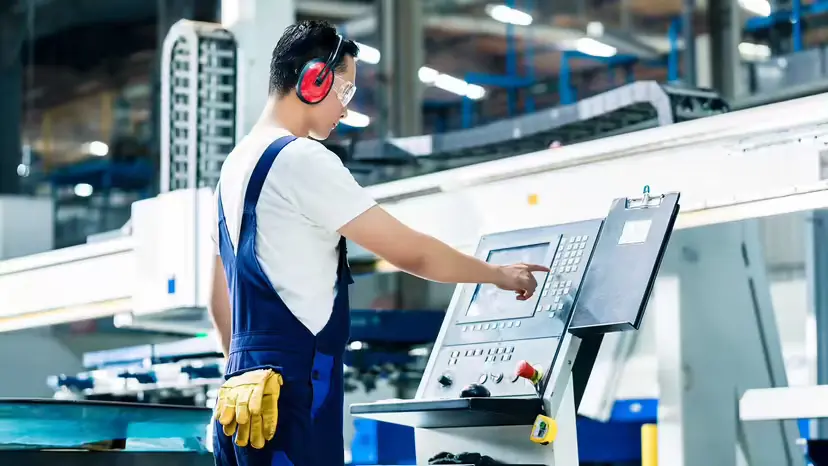
A computer numerical control machine, often known as a CNC machine, is a type of machining tool that uses stock material to be machined into the necessary shape in order to satisfy manufacturing directions and component specifications. CNC machines are controlled by software that has been pre-programmed to manage the motions of complicated machinery. This machinery includes grinders, lathes, mills, and other cutting instruments that are used to remove material.
These computer-aided manufacturing processes are capable of performing a broad spectrum of intricate and accurate CNC machining jobs, which enables them to produce produced goods and parts that have been specifically intended for the automotive, defense, and aerospace industries.
Although 3D printing and other forms of additive manufacturing take center stage in the creation of components created of soft materials in the 21st century, the majority of common objects are still the result of highly automated forms of subtractive machining.
Molds are used in the production of plastic water bottles using a process called CNC die sinking. Additionally, the individual drive system components of every car currently on the road are milled to precise dimensions. This ensures that all of the moving gears are able to fit together perfectly for the best possible mechanical performance.
Tony Schmitz, an engineering professor at the University of Tennessee in Knoxville, says that there is a good chance that almost everything you interact with in your day-to-day life has been in contact with a machine tool at some point. If you've ever flown in an airplane, like a Boeing 747, you should know that it took more than a million individual parts that were individually machined and then put together before the jet could take off.
What is the Operation of a CNC Machine Tool?

CNC machine tools are extremely diverse and dynamic, much like the wide variety of products they can produce. The vast majority of CNC equipment, on the other hand, operates inside one of two frameworks: an open-loop or closed-loop system.
When working with open-loop CNC systems, the operator is the one who develops the computer numerical control for the current task at hand and uses computer-aided design (CAD) software to build the g-code or work file. After that, the computer sends the appropriate instructions to the controller, along with any attached servo motors it may have.
These motors control cutting tools, such as lathes or grinders, along at least two axes (X and Y). However, high-end CNC machines can extend their versatility and accuracy by moving CNC mills and other accessories along multiple additional axes.
I have been working on #VB1 in the last few months and soon we will start the production. Construction is metal and CNC machining took time, please wait a little more for your Ultimate All Buttons Controller 💪. pic.twitter.com/thLdRsQpWz
— wazwuz (@wazwuz) June 6, 2023
While CNC machines are moving around the material, closed-loop CNC systems send feedback data to the monitor in order to correct any irregularities that may have occurred. This communication between the motor and the monitor makes it possible for closed-loop systems to make real-time adjustments to the turning machines and other CNC machine tools' velocity, position, and feed rate.
There are five primary uses for CNC machines.
The following is a list of some of the most typical applications for CNC machinery in industrial settings:
1. Cutting
The sinker EDM (electric discharge machine) and the wire EDM are two of the most cutting-edge methods, and CNC machines are ideal tools for projects that demand a precise and efficient cutting speed. Additionally, CNC machines can accept both of these cutting methods.
In a sinker EDM, a thermal erosion is produced as a result of the contact between two electrodes; one of the electrodes is attached to the tool and can take the form of copper or graphite. The material is also immersed in a dielectric fluid, which is the second component. Surprisingly, the tool and the workpiece are never brought into physical contact with one another during the manufacturing process. The Wire EDM operates in the same manner as the conventional EDM, with the exception that it employs wire electrodes as precise cutting tools.
2. Drilling
This exact method of hole-punching creates round holes in a workpiece by utilizing a spinning cutting tool, which is commonly drill bits or high-velocity water jets. The workpiece is kept still during the process. These holes are typically used to accept screws and bolts used in assembly.

3. Grinding
A practically flawless surface polish can frequently be achieved with the help of abrasive wheels that are commonly found in CNC machines. This subtractive grinding method has a level of accuracy that much exceeds that of any additive manufacturing process. It is capable of reducing flaws to tolerances that are as fine as one tenth the width of a human hair.
4. Milling
In the same manner as traditional mills and other types of hand-operated milling machines, a CNC mill removes material from a fixed stock piece by employing lathes, water jets, or turning tools. CNC mills are able to operate along many axes, which enables operators to mill in a variety of orientations with pinpoint accuracy, including horizontal, vertical, angled, and face milling. Because the machinist needs to adjust and resecure the stock material fewer times with these multi-angled capabilities, the manufacturing process for delicate pieces made of wood, metal, and plastic is more efficient.
5. Making a Turn
This operation on the CNC machine functions in a manner that is analogous to milling; however, rather than fastening the stock to a workstation, it is coupled to a turning mechanism that rotates at high speeds. The stock will next be molded into the correct shape by a worker utilizing a lathe or a CNC equipped with a comparable attachment. This process will involve the removal of small amounts of material.
What Exactly Is Meant by the Term "Computer-aided Manufacturing Software"?

The process of CNC machining relies heavily on computer-aided manufacturing (CAM) software in its several iterations. Because it manages both human and automated inputs and outputs of every stage in the manufacturing process, it serves as the mediator and interpreter of each computer-aided machining activity that may be performed.
For instance, designers will use computer-aided design (CAD) software to generate 3D models of their project, and then they will transfer that file into CAM software. The model will be interpreted by CAM, which will then function as a generator of either m-code or g-code. This will translate the project goal into the language used by CNC programming. CAM receives data from the CNC machine while it works on the project, and the CNC machine then relays that data to the operator, informing them of any factors that may influence the final product.
A Concise Overview of the Development of CNC Machine Tools
When manufacturing businesses started using cam-based lathes and milling machines in the mass manufacture of firearms, factory equipment, and daily things in the middle of the 19th century, this was the beginning of CNC machining. CNC machining has its roots in technological developments that occurred throughout the Industrial Revolution. In the late 1940s and early 1950s, a primitive type of numerical control machining known as m-code punch cards was used to begin the process of automating a number of industrial processes that had previously been manually controlled by a group of people. These tasks had previously been performed by an assembly line.
During the 1970s and 1980s, advancements in digital computers and computer software allowed for an increase in the number of manufacturing tools that could be automated, hence increasing production speed and overall efficiency.
In the 21st century, CAM and CAD software as well as cutting-edge CNC machines make it possible for small production teams to manufacture huge quantities of complicated parts in a manner that is efficient and economical. It is anticipated that the manufacturing business will continue to perfect and automate its procedures as the field makes more strides in the development of machine learning and artificial intelligence.
What Will the Future of CNC Machining Look Like and How Will It Be Done?

As we enter the first stages of the artificial intelligence revolution, it can be easy to daydream about a world in which robots do all the work. However, machining professionals and engineering academics both understand that the CNC machining process requires skilled workers to ensure that everything performs as it should.
According to Schmitz, "it [computer numerical control machining] is a cornerstone capability that will not be disappearing any time in the near future." Schmitz contends that additive and subtractive manufacturing are not only compatible with one another but actually compliment one another to the point where "hybrid manufacturing" will become the future standard for CNC machining processes.
Schmitz further states that this hybrid manufacturing technique will "begin with an additive part that is the pre-form or staring condition, and then we'll use limited machining to produce a smooth surface finish that you can't achieve with additive."
Nevertheless, one of the most demanding obstacles that will be faced by the future of CNC machining is the existing labor scarcity of trained machinists who are experienced with CNC programming. This shortage is one of the most significant challenges that will be faced. As more experienced CNC workers leave the sector and fewer newcomers enter it to take their place, this scarcity is only going to get worse.
The Department of Defense and a number of other federal agencies in the United States have come to the conclusion that it is necessary to resurrect an ineffective national manufacturing program and put into place cutting-edge manufacturing procedures in order to make the nation more competitive in the sector.
"Even though traditionally, machining has been thought of as a craft—that is, someone needs years and years of training and hands-on experience before they can create the parts they want—I believe we'll move away from that and toward a more automated machining environment," says Schmitz. "I believe we'll move away from that and toward a more computer-controlled machining environment." "There will still be jobs, but they'll be drastically different from what they were when CNC technology first started being used in the 1940s and 1950s,"

